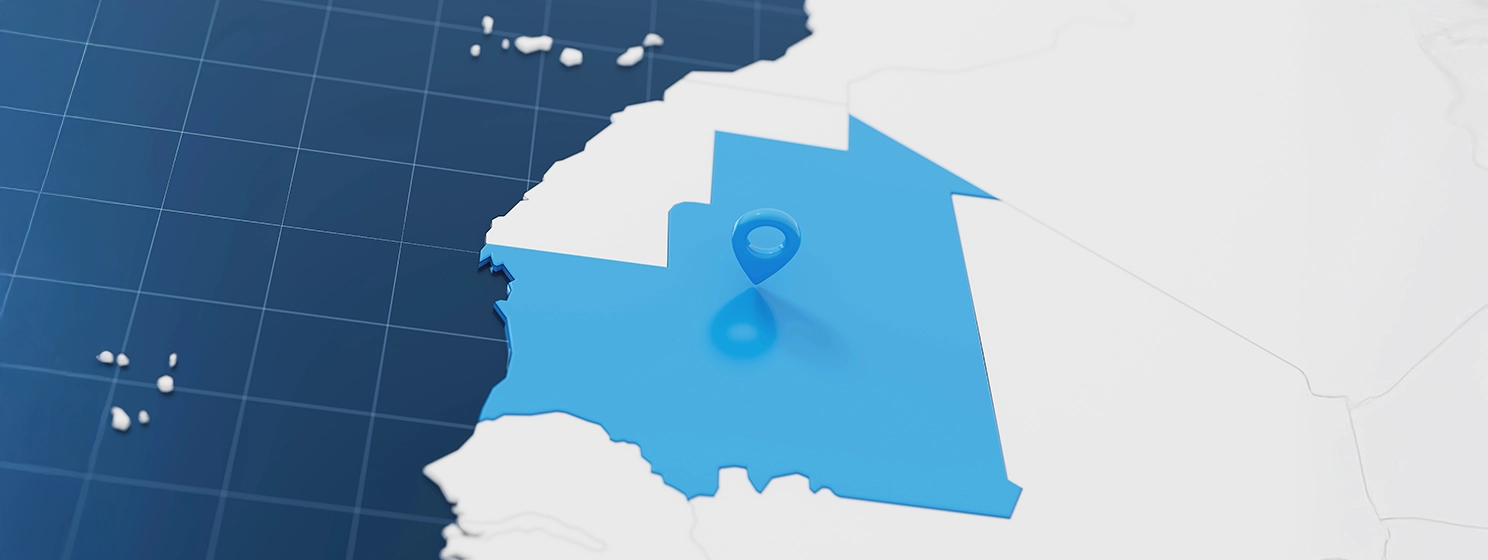|
Getting your Trinity Audio player ready...
|
U.S.-based technology company Cybastion has hosted the Mauritanian delegation, with representatives from both sides keen on exploring solutions for digital transformation.
- Mauritanian Ambassador explores digital transformation
- Africa closes digital gap
- Vietnam looks into agricultural digitalization
- Agriculture embraces next-gen technologies
According to a report, Cybastion executives met with Mauritanian Ambassador to the U.S. Cisse Mint Cheikh Ould Bold, alongside key embassy officials, at the company’s headquarters in Virginia. During the high-level visit, parties shared ideas to improve digital transformation metrics for Mauritania and the rest of Africa.
Cybastion unveiled its Digital Fast Track (DFT) initiative to the Mauritanian delegation as its primary tool for accelerating Africa’s digitalization. Launched in April, the DFT initiative involves a consortium of American technology companies led by Cybastion with a blueprint to advance the continent’s digital sovereignty.
Cybastion executives noted that the DFT will focus on new digital solutions and massive investment by U.S.-based technology firms into emerging African markets. Armand Tchokokam, Cybastion’s Global Chief Financial Officer, noted that a significant part of the plan will support the construction of data centers and submarine cables to improve digitization.
Apart from infrastructure and capital injections in tech ecosystems across Africa, Cybastion’s DFT will deepen the continent’s talent pool with a raft of training initiatives for emerging technologies. Furthermore, parties discussed the importance of fostering digital trust and the need for improved regional collaboration to combat cybercrime.
While the core of the meeting focused on Africa, Cybastion revealed plans to support Mauritania’s digitization efforts. The U.S.-based technology firm confirmed that it will play a crucial role in building secure e-government systems for the North African country while pledging to nurture the next generation of digital professionals.
As part of the visit, Ambassador Bold took guided tours of the Innovation Lab at George Mason University, gleaning lessons on the importance of academia in the push to develop resilient digital economies in Africa.
Mauritania has made significant efforts to improve its digitalization metrics and favors international collaboration to drive this push. Back in 2024, Mauritania partnered with Germany’s Giesecke+Devrient (G+D) for the design of its central bank digital currency (CBDC).
Africa makes valiant leap to close the digital gap
Despite the technological divide between Africa and advanced economies, several nations on the continent have unveiled plans to accelerate digitalization. Nigeria and Zambia have ramped up their digital identity initiatives, setting the pace for South Africa, Kenya, and Ghana.
Considered low-hanging fruit, many African nations have unveiled artificial intelligence (AI) blueprints with use cases in finance, healthcare, and education. A recent Mastercard (NASDAQ: MA) study forecasted that Africa’s AI market would reach $16.5 billion by the end of the decade, driven by rising adoption among retail corporate entities.
Vietnam’s Ho Chi Minh City records milestone in agricultural digital transformation
Amid the growing adoption of digital technologies in key sectors of the Vietnamese economy, a new report has highlighted rising use cases in agriculture.
A report by Vertical Farm Daily stated that the southern regions of Vietnam are embracing emerging technologies to improve agricultural processes for productivity and efficiency. The report focused on the significant strides made by the Tuan Ngoc Agricultural Cooperative in Long Truong Ward, Ho Chi Minh City.The cooperative has seen an increase in yield from the integration of digital technology into its hydroponic vegetable production processes. Members of the cooperative have deployed sensors and Internet of Things (IoT) technology to monitor soil pH levels, temperature, humidity, and electrical conductivity in real-time.
Furthermore, a group of farmers is leaning on data analytics and AI to optimize nutrient formulas and lighting cycles, while others are using the technologies for predictive use cases.
Apart from the remote monitoring of hydroponic systems and AI-based optimization perks, farmers in Ho Chi Minh City are also leveraging machine vision to spot pest infestations. Early use cases of the technology have demonstrated promise in detecting leaf discoloration and nutrient deficiencies at an early stage.
Using blockchain technology, cooperative members can track each stage of production to maintain transparent supply chains. The combination of these next-gen technologies has contributed to the region’s push for sustainable agricultural processes, setting the pace for the rest of Vietnam.
Farmers in the Tuan Ngoc Agricultural Cooperative are finding new uses for the byproducts of hydroponic farming. Leaning on emerging technologies, nutrient solution waste is being filtered and rebalanced for reuse, while coconut fiber from hydroponic production is finding new use cases across the value chain.
While Vietnam’s agricultural digitization is gathering momentum, the country has racked up wins in finance, healthcare, and education. A new five-year digital asset framework is underway and is poised to transform Vietnam into the leading hub for digital technologies across Southeast Asia.
Global agricultural sector embraces next-gen technologies
Outside of Vietnam, emerging technologies are playing a significant role in improving farm processes, with AI and IoT contributing the largest share. One study forecasted that the valuation of AI in the agriculture market will reach $10 billion by 2032 amid rising use cases in harvesting and planting.
Aware of the changing landscape, Thailand has introduced its AI agriculture application to bring next-generation technologies to local farmers. Meanwhile, the agrictech sector is recording stellar growth metrics in Tajikistan, Japan, Malawi, and Italy, with government policy driving adoption to previously unseen levels.
Watch: Finding ways to use CBDC outside of digital currencies

 12-11-2025
12-11-2025 





